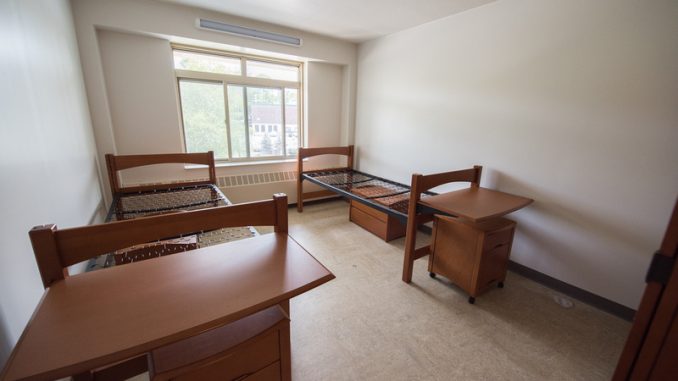
Following each heat wave we encounter on campus, facilities receive a barrage of email complaints as residence halls continue to pump heat during the hottest days students are on campus. In response, The Oracle reached out to facilities assistant vice president, Gail A. Beltrone to ask for clarification about the kind of heating system we have and its limitations. Her responses are below.
Where do we get our heating from?
“The Central Heating Plant next to the Service Building provides the majority of heat to the facility. It runs on natural gas or #2 fuel oil. It is a closed-loop system.”
Why can’t we just switch it off when it’s not needed, and who decides when the system is switched over for the season?
“The majority of the buildings at the University are a single closed loop heating, ventilation, air conditioning ‘HVAC’ system which can only run heating or air conditioning at one time. This means we do not have the ability to have heat running when temperatures are in the mid-50s on one day and then run air conditioning if temperatures are in the high-80s the next day.”
Is there anything we can do to transition to a cleaner energy source with more control over it? If not, why (besides cost)?
“The campus is engaged in an extensive clean energy planning process with outside consultants. This plan would then enable us to understand both the timeline and budget for conversion to greater cleaner energy. Facilities Operations has to balance the need to be able to still provide heat or air conditioning during these ‘shoulder seasons’ … We do our best to forecast weather patterns to understand when the heating or cooling trends will be consistent as there is no reversing our process once we switch over from one HVAC system to the other.”
In response to asking for tips for students to use during subsequent heat waves, facilities forwarded an email blast on Aug. 30, 2022. This email includes tips like finding a building with air conditioning, avoiding strenuous activity and slowing down when moving.
One of the tips stated, “During the day, close windows and blinds to keep out the heat and sunlight, even when you don’t have AC.”
While the issue in concern was caused because of the unnatural heat wave, the problem was exacerbated by the fact that most buildings still have heat turned to extremely uncomfortable temperatures.
As an example, history major Noelle Sullivan recalled a medical emergency caused by the academic buildings heating. From a combination of missing breakfast and the excessive heat right after Thanksgiving break, Sullivan passed out while trying to leave the classroom; they were rushed to the hospital soon after to check up on their physical state and to stitch up their face, which got cut open when they fell.
Drinking water and going to other buildings is an option to fight heat on campus, but the reality is dorm rooms are the center of a residents life on campus; those who are more vulnerable to heat due to medical issues or simply having a lower tolerance for heat are at a disadvantage.
The current closed-loop HVAC — heating, venting, air conditioning — system lacks the ability to provide localized variable heating, meaning the campus can only provide either full heat or air conditioning. The email sent to all students on April 25, 2023 stated that, “Facilities Operations must balance the requests of some individuals that want air conditioning on the first hot day in March with the reality of running complex heating and venting systems.”
As the system in place can’t easily lower heat on short notice, considerations have to be made for those more vulnerable to excessive heat, including those with respiratory issues and limited mobility.
According to the current Housing Handbook, fans aren’t permitted to be placed in a window, against the screen or not. Students who use fans to circulate hot air out of their room can do their best to follow this rule through use of box fans — an accessible and portable choice — to provide air circulation without sharp edges or stands that can puncture screens.
